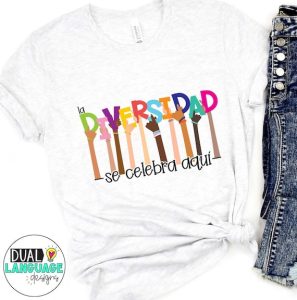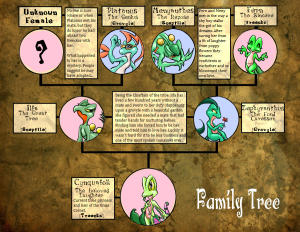A Good Touch And Bad Touch Guide is a concise reference that provides helpful information on appropriate and inappropriate physical contact for individuals of all ages, emphasizing personal safety and consent. In this guide, you will learn about the importance of teaching children about good and bad touch, how to recognize and respond to uncomfortable situations, and the significance of open communication with trusted adults.
It also provides tips for parents and caregivers on how to have these important conversations and create a safe environment for children to disclose any instances of inappropriate touch. By promoting awareness and education, this guide plays a crucial role in protecting individuals from potential harm and fostering a culture of consent and respect.
Table of Contents
ToggleUnderstanding Good Touch And Bad Touch
Understanding the difference between good touch and bad touch is crucial for personal safety. This comprehensive guide provides clear explanations and practical tips to help individuals recognize and respond appropriately to different types of touch.
| Definition of Good Touch | Definition of Bad Touch |
| Good touch makes you feel happy and safe, like a hug from a loved one. | Bad touch feels scary or uncomfortable and makes you want to move away. |
Signs Of Good Touch
Signs of Good Touch: Good touch is a type of physical contact that promotes comfort and safety. It encourages individuals to feel secure and protected. In a good touch, personal boundaries are respected, and people have the right to determine what is comfortable for them. It is important to recognize and understand the signs of good touch to create a supportive and healthy environment. Good touch can include gentle hugs, pats on the back, and holding hands, among others. It is crucial to teach children and adults to distinguish between good touch and bad touch to ensure their well-being. By promoting open communication and providing education, we can empower individuals to recognize and respond to good touch appropriately.
Signs Of Bad Touch
Signs of Bad Touch: If a touch causes discomfort or pain, it may be a sign of bad touch. Another red flag is when someone ignores personal boundaries, making you feel uneasy and unsafe. Trust your instincts and seek help if you experience any of these signs.
Teaching Children About Good And Bad Touch
Teaching children about good and bad touch is crucial for their safety and well-being. Open communication is key in this process, encouraging kids to express their feelings and concerns. Empowering children to confidently say no to any form of inappropriate touch is essential in providing them with the tools they need to protect themselves. It’s important for adults to create a safe and supportive environment where children feel comfortable discussing these sensitive topics. By teaching kids about good and bad touch, we equip them with the knowledge and skills to recognize and respond to any potential dangers. Providing clear guidance on this topic helps children develop a strong sense of self-awareness and promotes a healthy understanding of boundaries. It’s imperative to address this subject with sensitivity and openness, ensuring that children can navigate these conversations with confidence.
Empowering Children To Speak Up
Children’s safety is a top priority, and it is important to empower them to speak up in situations involving good touch and bad touch. Encouraging trust in caregivers plays a crucial role in this process. Safe adults, such as parents, teachers, and family members, are key figures in promoting the safety of children. They should educate children about their bodies and the difference between appropriate and inappropriate touches. By fostering an open and supportive environment, safe adults can create a space where children feel comfortable expressing their feelings and concerns. It is vital to establish clear communication channels so that children know who they can turn to if they need help. Through ongoing conversations and building trust, safe adults can empower children to advocate for their own safety and well-being.
Dealing With Disclosure Of Inappropriate Touch
Learn how to handle inappropriate touch situations with our comprehensive guide on recognizing good and bad touch signals. Establishing boundaries is crucial in ensuring a safe and secure environment for everyone involved. You can find valuable information and tips to address disclosure effectively.
| Listening to the Child: When a child discloses inappropriate touch, listen to them without judgment and believe their words. Offer reassurance and create a safe space for the child to express their feelings. Avoid asking leading questions and let the child speak freely about their experience. |
Seeking Professional Help: It is essential to seek professional help from counselors or therapists specialized in childhood trauma. Consult with child protective services or law enforcement for further action. Focus on the well-being of the child and prioritize their safety above all else. |
Preventive Measures To Protect Children
Guide on recognizing good touch and bad touch can help children stay safe. Teaching preventive measures can protect kids from potential harm and empower them to speak up. Educating children early about boundaries is key to creating a safe environment for them.
| Setting Healthy Boundaries: Encourage open communication with children. | Educating Children on Body Autonomy: Teach them to say no to unwanted touches. |
| Empower them to speak up: Remind them their body belongs to them. | Respect their choices: Validate their feelings and decisions. |
Creating Safe Environments
Creating Safe Environments: When it comes to the safety of children, supervision and monitoring are crucial. Recognizing red flags is essential in fostering a secure environment. Caregivers should maintain a watchful eye and be vigilant for any signs of discomfort or fear.
Frequently Asked Questions For Good Touch And Bad Touch Guide
What Is The Difference Between A Good Touch And A Bad Touch?
A good touch is comforting, like a hug from loved ones, while a bad touch makes you feel uncomfortable and violated. It’s important to differentiate between the two to ensure safety and well-being.
How Can I Teach My Child About Good And Bad Touch?
Start by having open conversations about body boundaries and privacy. Use age-appropriate language and teach them to trust their instincts. Enforce the message that it’s okay to say no to any touch that feels wrong.
Why Is It Essential To Educate Children About Good And Bad Touch?
Children need to have the knowledge and confidence to identify and report inappropriate touching. Education empowers them to protect themselves and seek help if they ever experience an uncomfortable situation.
Conclusion
Understanding the difference between good touch and bad touch is crucial in safeguarding the well-being of ourselves and our loved ones. By educating ourselves and spreading awareness about this sensitive topic, we can empower individuals to recognize any inappropriate behavior and seek help when needed.
Remember, every touch should promote safety, respect, and consent. Together, we can create a society that prioritizes the protection of all individuals, especially our most vulnerable ones. Stay informed, stay vigilant, and let’s make a positive change!

Mother of Two children. I’m a former teacher with a background in child development and a passion for Good parenting. I understand child development and know how to develop activities to help children learn and grow. Spare time, I enjoy spending time with my family, reading, and volunteering in my community. Read More







